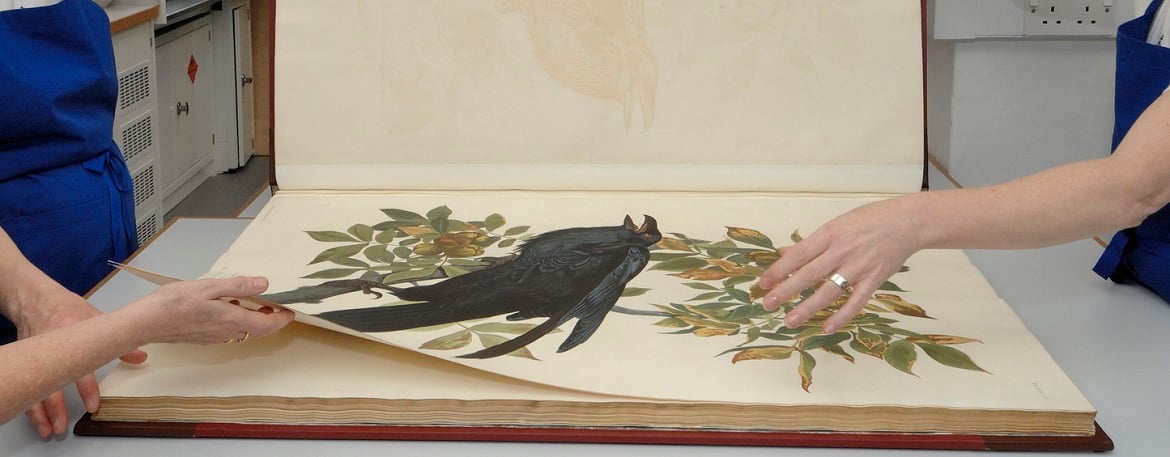The rebinding of Audubon’s 'Birds of America'

John James Audubon (1785-1851) was a naturalised American born in Haiti and raised in France. He had a passionate interest in birds from his early years. To illustrate them accurately and sympathetically became his life’s work. His immense four-volume Birds of America was printed and published in the UK between 1827 and 1838. It comprises 435 hand-coloured prints from his original paintings which depict birds life-size in their natural habitat. Prior to Birds of America, ornithological illustration was mainly taken from stuffed specimens. In contrast, Audubon’s individualistic paintings were based on freshly-killed birds and his extensive observations in the wild. They caused a sensation in British society, as did the charismatic ‘Kentucky woodsman’ himself.
Through contacts and dogged determination he found subscribers, printers and enough species to fulfil this extraordinary project. It was innovative and pioneering, not only in the world of ornithology, but in the size and scale of the whole venture: his insistence on having even the largest species reproduced life-size provided dramatic prints on ‘Double Elephant’ size paper (approximately 40 x 28 inches; 100 x 67cm) one of the largest sizes of European handmade paper.
Subscribers received the illustrations in ‘numbers’ of five loose plates at a time: one large, one medium and three small. There was no text other than a title page to each volume. One of these original subscriptions was taken out by George IV and continued after his death by Queen Adelaide, wife of his successor William IV: this is the copy in the Royal Library.







